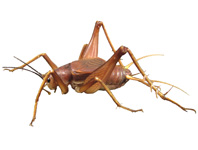Abstract
Sexual dimorphism is a phenomenon in which the male and female of a species differ in features of the external morphology such as size, shape, colour, or the development of appendages. In the Diptera, stalked compound eyes, leg modifications and wing patterns are well-known examples of sexual dimorphism (McAlpine 1979; Zeil 1983; Adler & Adler 1991; Meyerrochow & Reid 1994; Wilkinson & Dodson 1996; Sivinski 1997; Baker & Wilkinson 2001; Eberhard 2002; Puniamoorthy et al. 2008). Males and females of sexually dimorphic species are often described as separate species due to the dissimilarity in external characters, thus leading to problems in identification and proper association of the sexes. In contrast to characters that are usually involved in sexual dimorphism, leg chaetotaxy is considered one of the invariable character systems, irrespective of sex, in the tribe Siphonini of the Tachinidae, and is thus widely used in keys to genera and species (O’Hara 1989; Andersen 1996). Species’ identification by DNA barcoding has been used in various groups of organisms (Hebert et al. 2003; Ratnasingham & Hebert 2013). In insects, males, usually more easily identified by morphological characters (e.g., postabdominal features) than females, are often used for barcoding. The identification of females will improve as sequence data accumulate, such as data from pairs collected in copula. In this paper, I describe sexual dimorphism in the Japanese endemic species of tachinid fly Ceromya glaucescens Tachi & Shima, 2000 of the tribe Siphonini, and use molecular and morphological data for the identification of this species. Sequence data of C. silacea (Meigen, 1824) are also included for comparison.
References
Adler, P.H. & Adler, C.R.L. (1991) Mating behavior and the evolutionary significance of mate guarding in 3 species of crane flies (Diptera, Tipulidae). Journal of Insect Behavior, 4, 619–632.
https://doi.org/10.1007/BF01048074Andersen, S. (1996) The Siphonini (Diptera: Tachinidae) of Europe. Fauna Entomologica Scandinavica, 33, 1–146.
Baker, R.H. & Wilkinson, G.S. (2001) Phylogenetic analysis of eye stalk allometry and sexual dimorphism in stalk-eyed flies (Diopsidae). Evolution, 55, 1373–1385.
https://doi.org/10.1111/j.0014-3820.2001.tb00659.xEberhard, W.G. (2002) Physical restraint or stimulation? The function(s) of the modified front legs of male Archisepsis diversiformis (Diptera, Sepsidae). Journal of Insect Behavior, 15, 831–850.
https://doi.org/10.1023/A:1021161915227Hebert, P.D.N., Cywinska, A., Ball, S.L. & deWaard, J.R. (2003) Biological identifications through DNA barcodes. Proceedings of the Royal Society B: Biological Sciences, 270, 313–321.
https://doi.org/10.1098/rspb.2002.2218McAlpine, D.K. (1979) Agonistic behavior in Achias australis (Diptera, Platystomatidae) and the significance of eyestalks. In: Blum, M.S. & Blum, N.A. (Eds.), Sexual selection and reproductive competition in insects. Academic Press, New York, pp. 221–230.
https://doi.org/10.1016/B978-0-12-108750-0.50012-4McAlpine, J.F. (1981) Morphology and terminology – adults. In: McAlpine, J.F., Peterson, B.V., Shewell, G.E., Teskey, H.J., Vockeroth, J.R. & Wood, D.M. (Eds.), Manual of Nearctic Diptera. Vol. 1. Agriculture Canada Monographs, 27, pp. 9–63.
Meigen, J.W. (1824) Systematische Beschreibung der bekannten europäischen zweiflügeligen Insekten. Vierter Theil. Schultz-Wundermann, Hamm, xii + 428 pp.
Meyerrochow, V.B. & Reid, W.A. (1994) Male and female eyes of the Antarctic midge Belgica antarctica (Diptera, Chironomidae) – a scanning electron-microscope study. Applied Entomology and Zoology, 29, 439–442.
O’Hara, J.E. (1989) Systematics of the genus group taxa of the Siphonini (Diptera: Tachinidae). Quaestiones Entomologicae, 25, 1–229.
Puniamoorthy, N., Feng-Yi, S.K. & Meier, R. (2008) Bending for love: losses and gains of sexual dimorphisms are strictly correlated with changes in the mounting position of sepsid flies (Sepsidae: Diptera). BMC Evolutionary Biology, 8, 155.
https://doi.org/10.1186/1471-2148-8-155Ratnasingham, S. & Hebert, P.D.N. (2013) A DNA-based registry for all animal species: the barcode index number (BIN) system. PLoS ONE, 8, e66213.
https://doi.org/10.1371/journal.pone.0066213Robineau-Desvoidy, J.-B. (1830) Essai sur les myodaires. Mémoires présentés par divers savans à l’Académie Royale des Sciences de l’Institut de France (Sciences Mathématiques et Physiques), Série 2, 2, pp.1–813.
Sivinski, J. (1997) Ornaments in the Diptera. The Florida Entomologist, 80, 142–164.
https://doi.org/10.2307/3495551Swofford, D.L. (2002) PAUP*. Phylogenetic Analysis Using Parsimony (*and Other Methods). Version 4. Sinauer Associates, Sunderland, Massachusetts.
Tachi, T. (2013) Molecular phylogeny and host use evolution of the genus Exorista Meigen (Diptera: Tachinidae). Molecular Phylogenetics and Evolution, 66, 401–411.
https://doi.org/10.1016/j.ympev.2012.10.017Tachi, T. & Shima, H. (2000) Taxonomic study of the genus Ceromya Robineau-Desvoidy of Japan (Diptera: Tachinidae). Beiträge zur Entomologie, 50, 129–150.
Tachi, T. & Shima, H. (2010) Molecular phylogeny of the subfamily Exoristinae (Diptera, Tachinidae), with discussions on the evolutionary history of female oviposition strategy. Systematic Entomology, 35, 148–163.
https://doi.org/10.1111/j.1365-3113.2009.00497.xVilleneuve, J. (1921) Description d’espèces nouvelles du genre Actia Rob. Desv. Annales de la Société Entomologique de Belgique, 61, 45–47.
Wilkinson, G.S. & Dodson, G.N. (1996) Function and evolution of antlers and eye stalks in flies. In: Choe, J. & Crespi, B. (Eds.), The evolution of mating systems in insects and arachnids. Cambridge University Press, Cambridge, pp. 310–328.
Zeil, J. (1983) Sexual dimorphism in the visual system of flies – the compound eyes and neural superposition in Bibionidae (Diptera). Journal of Comparative Physiology, 150, 379–393.
https://doi.org/10.1007/BF00605027

